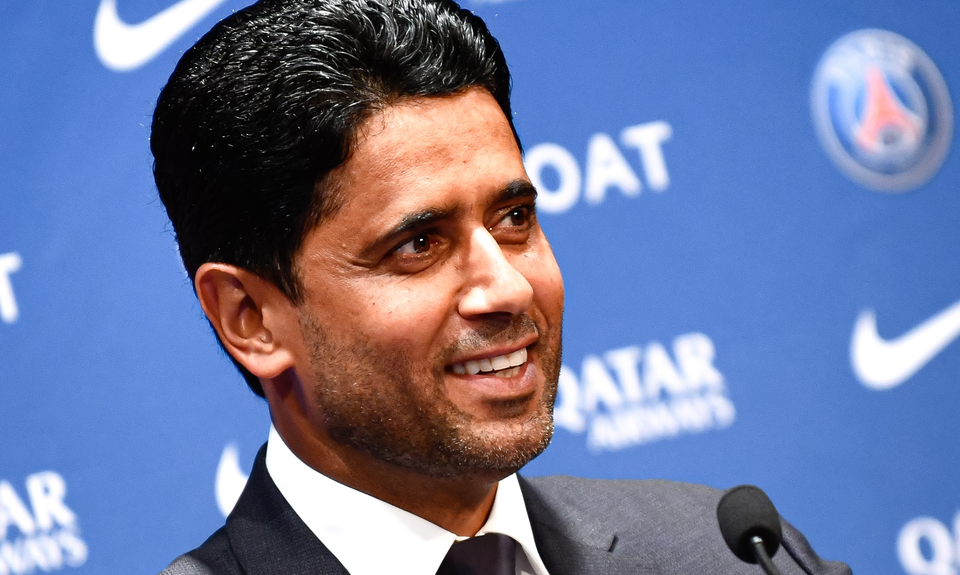Pole reversal is not just a scientific consideration, it’s also a geopolitical one. Sport, one of the greatest instruments of soft power, is its most visible manifestation. On the pitches, on the circuits and in the stadiums, Asia is the new Europe.
On February 1, 2019, Qatari footballer Akram Afif scored the winning goal in his nation’s Asian Cup Final victory over Japan in the United Arab Emirates. Within days of this, Parag Khanna published his prophetic text The Future is Asian, in which he explained how a pivot from the Global North to the Global South will bring the ascent of nations from across Asia to new positions of international power as the 21st century progresses.
For Qatar, this ascent began to gather speed nine years earlier when, in 2010, it won the right to host FIFA’s 2022 World Cup. Yet even in 2019, Doha was already positioned as a major sports event destination, hosting both the World Athletics Championship and FIFA’s Club World Cup. By that stage, it was clear that Asia’s rise was more a case of reality than prophecy. Indeed, in another book published that year, Fatima Bhutto heralded three new kings of the world (Bollywood, Dizi, and K-Pop), to which she could now add the likes of the Indian Premier League (IPL) and Saudi Arabian football’s Pro League.
The wind of Asia
This wind of change has been blowing for at least two decades and is not simply a matter of where sports events are staged, or which countries have large populations to sustain them. For instance, Asian companies are increasingly becoming major backers of sport with China contributing the largest number of the Olympics’ global sponsors. Otherwise, think Real Madrid’s team shirt sponsor (Dubai’s state-owned Emirates Airline) or one of Formula 1’s most prominent partners — Petronas (Malaysia’s state-owned petroleum corporation) — and Asia’s growing commercial presence in sport is clear.
Similarly, there is a growing Asian presence in sports governance, perhaps most pertinently illustrated by Nasser Al-Khelaifi. The chairman of Qatar Sports Investments, Al-Khelaifi led the acquisition of French Ligue 1 football club Paris Saint Germain, for which he now serves as president. Through this role, he was able to become chairman of the European Clubs Association (which represents organisations including AC Milan and Manchester United), which, in turn, secured him a position on UEFA’s executive council. All of this means that an Asian now sits at the heart of one of European football’s most important decision-making bodies.
Meanwhile, over at the FIA — motorsport’s global governing body — Dubai’s Mohammed Ben Sulayem became its first Asian as well as its first non-European president in 2021. Whether it is European governance (Switzerland has long been the home of global sport’s most important governing bodies) or United States (US) business, the Global North’s sporting hegemony is under threat like never before (although America remains the world’s largest market for sport, at least for the time being). This is the result of several factors, most notably globalisation, resource endowments, and digitalisation.
Does Europe still love sport?
Just as the world in general is now more multipolar, so too is sport. New centres of power have emerged – in post-colonial Asian nations like Qatar and Singapore (which even has its own sports hub), but also in environments that exhibit both a strong entrepreneurial spirit and a predisposition towards consuming sport (Lalit Modi and the IPL being a good example of this). As Asian nations have risen, so European nations have struggled somewhat; many are still recovering from the shock of the 2008 financial crash, later compounded by the Covid pandemic, which has resulted in increased reluctance to spend lavishly on sport.
In several cases, popular referendums have been held in Europe (Munich and Krakow being two such cases) in which local populations were asked whether their cities should bid to host mega-events. Faced with stringent fiscal choices in such instances, people have voted ‘no’.
As democratic discomfort has somewhat diminished the Global North’s appetite for sport, states and government institutions in the Global South have developed an appreciation for how powerful sport can be. The appearance of Portuguese international footballer Cristiano Ronaldo and the Argentine Lionel Messi in advertisements for the Saudi Arabian Tourist Authority is evidence of this. What is striking about Asia in this regard is how states are learning to play the games that have long been used by countries in the Global North, using sport as a means through which to project soft power being one example.
Even more significantly, Asian states have used their resource endowments to launch aggressive national strategies aimed at driving the development of sport. Qatar’s spending on sports has been funded by its oil and gas revenues which Saudi Arabia, set to host the 2034 FIFA Men’s World Cup, is now replicating. India’s large population makes for both a sizeable market and a source of talent, which sustains cricket but is also now seeing the country take the sport more seriously from a strategic standpoint. Countries including China and Indonesia take a similar view, the government in the former still retaining a hope that it will become the world’s largest domestic sports economy by 2025.
It’s Europe adapting to Asia
Thanks to a combined population of more than three billion people, the market for broadcast sports in China and India is huge, well-established, and powerful. In its pursuit of lucrative new revenues, Spanish football’s La Liga decided to break with decades of tradition by bringing forward kick-offs to lunchtime so that games can be beamed directly into Chinese homes during the Saturday evening peak period. In India, IPL cricket matches have long been famed for their televisual appeal. However, the streaming of them is breaking new records and setting standards that other sports elsewhere in the world may currently only aspire to. Earlier this year, India’s Reliance Jio Cinema broke the world record for the most concurrent views of a live-streamed event.
Khanna and Bhutto were undoubtedly correct in their earlier assessments of Asia’s rise, though they did not identify the role that sport would play in the processes they examined. No matter, mounting evidence shows that sport is driving national transformation in some Asian countries, enabling others to rehabilitate their reputations, whilst also stimulating new technologies that are changing the industry. There is surely no doubt about where we will be in 2100, perhaps even sooner, the future of global sport is Asian.






